
Street Shooting in Israel & Jordan: Is Micro 4/3 the Perfect Format?
By David Ellis
From the moment you hit the streets in Israel or Jordan, you inevitably stumble over the region’s cultural, religious and political fault lines. The initial dialogue goes something like this.
Person (man on the street, cab driver, shopkeeper, etc.): “Where are you from?”
You: “The U.S.”
Person: “Why are you here?”
You: “I’m a tourist—I’ve always wanted to visit.”
Person: “No. Why are you here?”
It can feel more like an interrogation than a conversation. Which makes sense. In an active conflict zone shaped by centuries of carnage and conquest, people are naturally wary. It’s important to know with whom you’re talking. And it makes street photography a much more delicate proposition.
So rather than land in a specific ideological camp and make editorial statements, my goal was to photograph common ground where I could find it–everyday moments that people shared, regardless of religion or nationality. After all, I’m a street photographer, not a photojournalist.
In any street environment, being respectful is crucial. Especially in hot spots like Jerusalem and Amman where, among other sensitivities, there are strict rules about photographing women, certain rituals and sacred places. It was critical to stay low profile. At the same time, this once-in-a lifetime trip deserved the highest quality images. It was a compromise: Do I sacrifice getting the shot for the best IQ? Which system, Olympus Micro 4/3 or Canon DSLR?
Compounding the challenge was the fact that I recently had a bad case of GAS, so I was biased towards getting the best IQ. Like many of us, I’m always looking for the next, best thing and with all the hype and hoopla around full frame, I started to believe the anti-4/3 propaganda. Worse, I started to not trust my own eyes–I saw all the “flaws” of 4/3. I rented a Leica M10, Canon EOS-R and Fuji XT-3 and shot with each of them for a week or so—to no conclusion. Sony was off the table because, for me, the UX is more computer than camera: precise, but soulless and uninspiring. Fuji came closest to how I work, but the others, fantastic cameras all, were a bridge too far. I wasn’t feeling it.
Plus, as advanced and sophisticated as each camera was from a pure capability standpoint, none were as full-featured as the EM-1 Mkii. It’s arguably one of the most advanced cameras in the world. Many would argue it’s overbuilt. Ironically, I use virtually none of it. I shoot purely in RAW, single shot, manual mode, manual focus, occasionally auto-bracket, but never focus stack or use any of the advanced features like Live Composite. From a tech standpoint, I haven’t really evolved a day beyond what I could do with the Nikon FM2 I learned on decades ago. For this particular trip, I needed speed, reliability, and most importantly, stealth.
I opted for getting the shot, rather than better IQ, chose the OM-D EM1 MkII and mostly used the Oly 12-40 2.8 Pro. I’m sure if I’d brought a full frame camera, the lens diameters alone would have made my subjects either scatter or become confrontational. IQ doesn’t matter much if you are being chased down a souk by an angry merchant. Plus, the schedule was aggressive. We walked 65 miles in 8 days—it’s a no-brainer whether you want to lug 10 pounds or 25+ with the equivalent lens assortment.
It was the right call. The smaller format made it possible to get close to people who initially didn’t want to have anything to do with me. I watched the medicine man in the Muslim Quarter wave off a half-dozen big cameras before I showed up and somehow got him to look right into my lens. (Insert Photo 10 here)
He, like others, didn’t see the EM-1 MkII as pro camera and would have been more likely to turn away if they had to stare into a 3-inch piece of full frame glass. IBIS was also key. In the crush of a crowded city like Jerusalem, the shot materializes and disappears in seconds. When I had to pull the camera up and down quickly, having five stops of stabilization delivered many more usable shots. At night, I set lower ISOs (400-800) and was able to handhold up to ½ second to overcome possible high ISO noise. Shooting in silent mode helped, too. Finally, for what I do, the Micro 4/3 sensor and Oly glass gave away nothing to full frame in terms of IQ.
Ultimately, it’s about intentions and knowing how you work. What you want to accomplish—pixel-peeping and reviews notwithstanding. I thought about going even smaller—using a Ricoh GRiii or fixed lens rangefinder. But that’s not how I shoot. I’m not lazy using zooms and like the economy of having the reach of many lenses on one body. As has been said many times here on this site, the perfect camera is the one that is a vehicle for your vision. Nothing more. Nothing less.
For more images, please visit my website: http://www.daellis.com



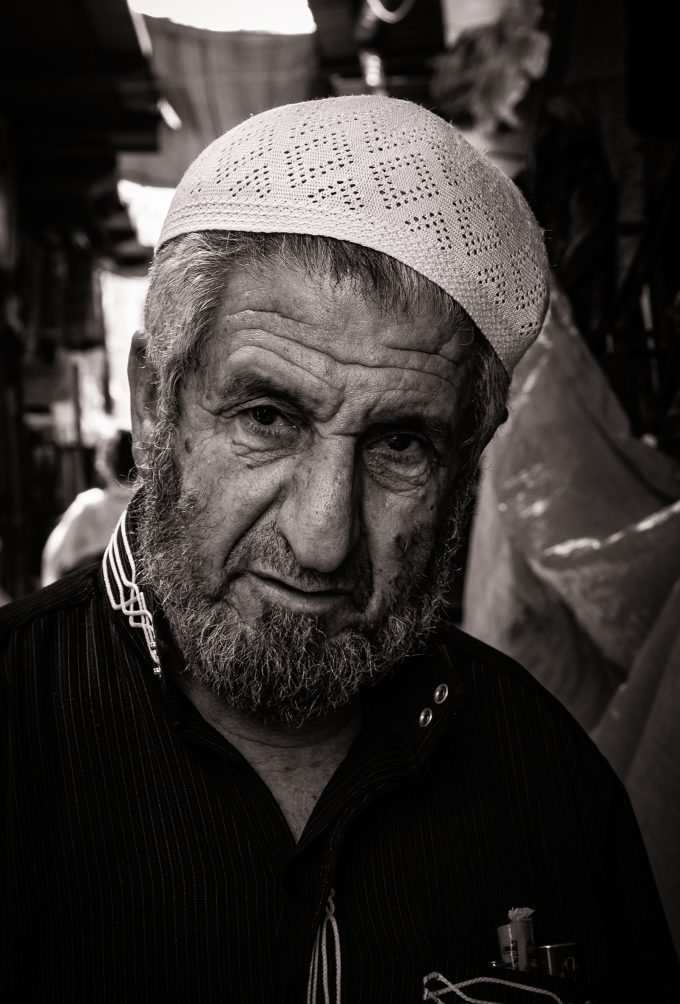



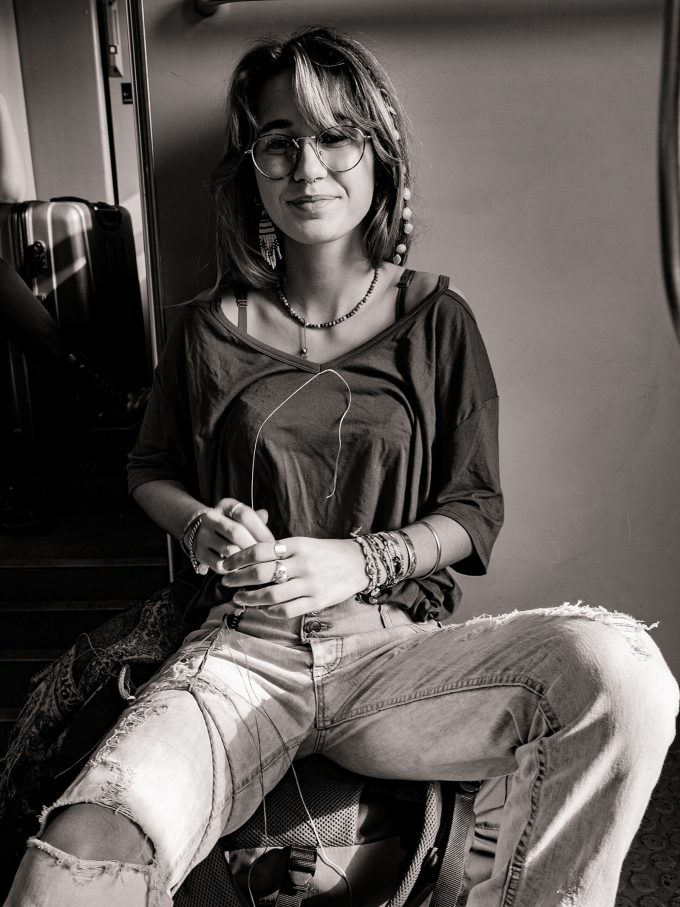


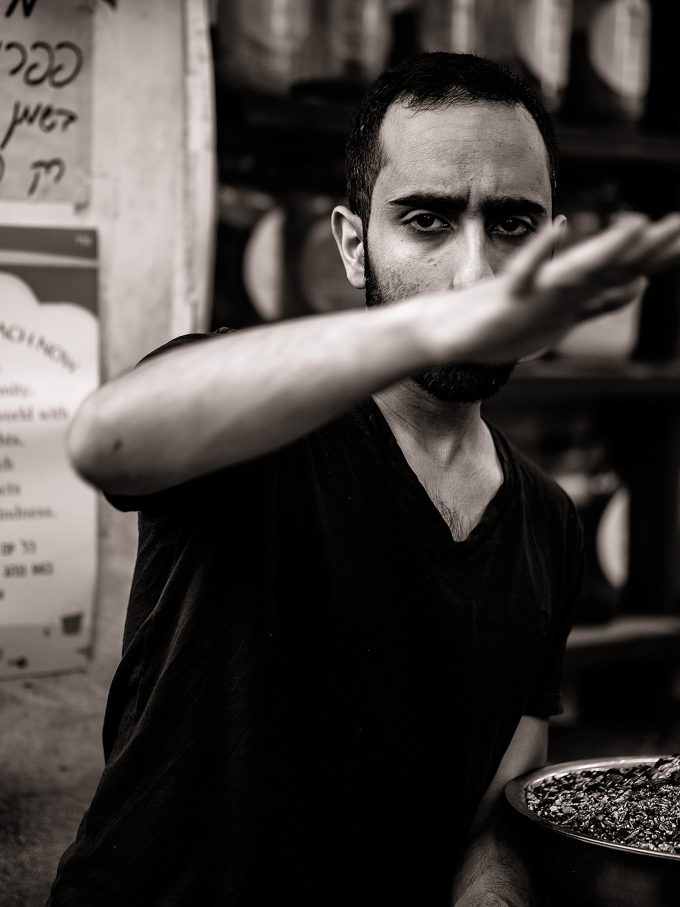
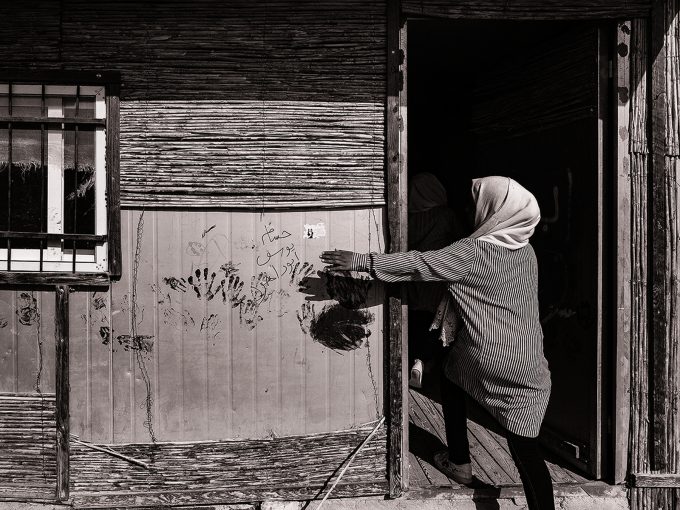

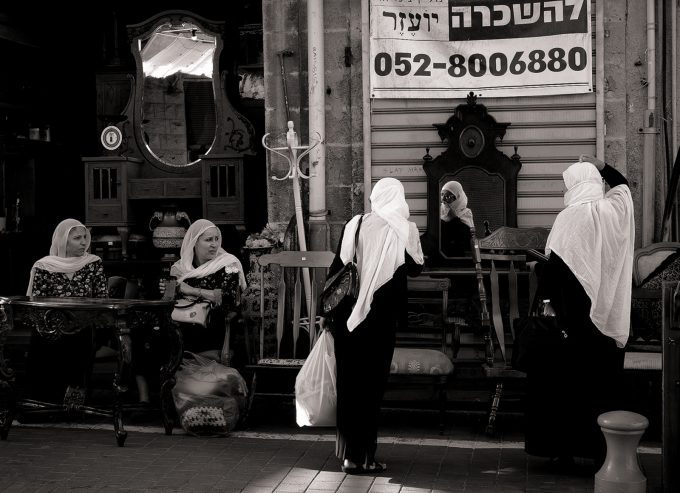

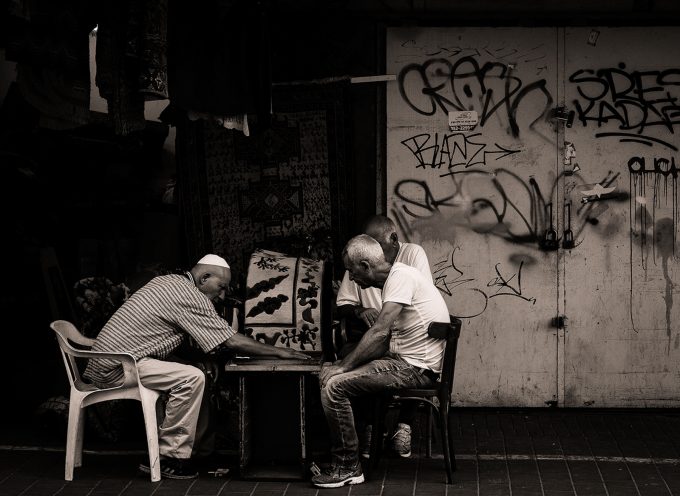





Fantastic shots and great quality! I’ve got the Sony A7 III with the Tamron 28-75 and I’ve got to say that I love the camera and the results. That A7 III just feels great in the hands and image quality is unbelievable. But I agree that for street shooting it’s not perfect at all. Olympus also has the great advantage that you don’t have dust problems when you change lenses. I would only change lenses at home on my Sony, because of fear of dust 😉
I think this is a really good article with some well made points. I do disagree about the usual and, l must say, lazy comment about Sony being soulless. Nothing could be further from the truth. Stick a Zeiss Loxia 2/50 on an A7R mk 2 or mk 3 and you will be rewarded. Manual focus, small size, aperture controls on the lens, superb IQ….well, it suits me as a former film user who took a while to adopt digital as a serious format.
Alan, glad you’ve found a combination that works for you. I actually wanted to love Sony cameras, given the terrific technology and IQ and went so far as to have bought an A6000 and Zeiss lenses. I rented an A7iii, but just didn’t personally connect with either of them. Neither inspired me. I know it’s heresy on this site, but for other reasons, I didn’t fully connect with the Leica M10, either–not enough to justify the substantial investment. Both brands have spectacular capabilities and cadres of incredible photographers who use them, but they just weren’t for me.
Thanks for sharing, David. It’s not just the equipment – it’s the artistic eye, the sixth sense that tells you when a good shot is about to appear, and the patience (or quick reflexes) that make it happen. Well done! Kudos to Marianne for her patience too.
Beautiful Photos, its really about the photographer and composition. FF setup does not have to be large though. If you’re happy with the f2.8 in m4/3. You can carry around an f4 zoom instead or even sony’s 28-70 3.5-5.6. Which would give similar depth of field. Although you have to raise iso, ff can get generally clean 25600 iso. If you’re happy with m4/3 f1.7 primes, most FF f2.8 primes are small and light and cheap as well. Yes FF, can get huge and expensive really fast. But one dosen’t have to follow the crowd and go for the FF f2.8 zooms and the f1.4 primes. Which is way overkill for most cases imho.
Don’t forget that m43 at 200 ISO and Sony A9 at 800 ISO have the same dynamic range and image quality. Add the superior IBIS of the Oly and there will therefore be times when the FF solution offers no advantages.
This is very good photography…Love the work..and especially the last photo of the two mean leaning against coffee bar…such life!! So many of your photographs reminded me of the great French Brassai..
Direct, emotional, raw, letting the subject define the photograph….keep up the good work and hope to see more
Simply astounding. To call the work “street photography” would be an insult. The work harkens back to all the greats.
I’m completely blown away, humbled and motivated by the responses I’ve received from people on this site. So glad the work has resonated. THANK YOU!
Great street photos! Such bright portraits, a real masterpiece!
Great pictures and I like your style of processing them.
Lovely images. Thank you for sharing your work.
David, EXCELLENT photographs! You proved that it is not the camera, but the guy behind the camera that makes the difference! This day in age, there really isn’t a bad camera out there (at least in the name brands). Keep up the great work my friend!!
Thank you, Scotty! Will do.
Great article and photographs…Although I do own an full frame camera, I also own an EM1 (mark 1) and can deliver just as good a result. It is all about the right tool for the job.
Interesting, if you go back to Ansel Adams days, I doubt he would have viewed a 35mm negative as “full frame”. There is no magic pill with the full frame cool aid.
Great work, impressive images, super post process and thanks for the kind words regarding m43
Nice photos. Let’s no more debate if M43 is good enough or not any more. The end photo is the only thing that matters. If weight is any concern, Fuji camera is lighter than the newer Olympus, Since fuji has a larger sensor, the choice is obvious.
Lovely pictures, I really enjoyed them. For traveling, I love having my old trusty GM1 in places where I could get robbed and/or killed for having bigger/flashy camera gear. Made me get pictures I would have never gotten otherwise.
Good story and great images. I’d love to visit Israel.
Go check out Thomas Stirr’s website to see what he can do with small sensor cameras.
Agree his SE Asian photos are a tour de force and will likely make you as jealous as they made me!
Great photos and down-to-earth writing.
Very recently, I made exactly the same decision, full frame or M43, and went with Olympus gear, (partly because of Steve’s opinion of it). I’m completely happy with it. If I thought I needed full frame, I would have gone that way, but for what I do, M43 does the job perfectly, and that’s what matters.
Neither is better, simply different, for different needs and tastes.
Some nice shots, well done. I recognize some of the people and places in your photos as I lived in Israel for 14 years and did a lot of street photography (among others). I’ll probably go back in 6 months to a years time.
I wanted to say that when Israelis ask “why” it’s because they really want to to know about you. It’s obvious you’re a tourist, and you can end up having some great conversations. If you’re obviously a local and go around taking pictures some of the older Israelis can be suspicious, because back in the day the tax office would send people to photograph people’s business so they’re obviously not welcome, lol.
But in general, Israel is very photog friendly. South Africa, not at all.
I’d like to share some photos of Israel on this site once I get a new laptop. Mine was stolen by 4 guys with guns last week in Joburg so maybe next month.
Funny you say that. I had terrific conversations in Israel, not only with the people photographed here, but random people in shops and on the street. The conversation was often more rewarding than the images they stimulated. Amazing place!
Some nice shots I see people with their arms up seeming to block the shot I personally wouldn’t publish those out of respect
I wouldn’t either. But people in the region often gesture with their hands and arms when they speak, which was the case here. I’ll always drop the camera if I’m being waved away and not make the picture. These were taken during relatively long, animated conversations with the subject.
Stellar work!
I loved the images in your post. I switched from full frame nervously to M4/3 a year ago because I could no longer carry heavy glass. I went with the Panasonic G9 and have a mixture of pana Leica glass and Olympus Pro glass and the photos are amazing. Unless you need high dynamic range for a image, which is rare for most photography, then you really do not need full frame. I purchased a Hasselblad X1D with a prime for the special need images and the pleasure but I could not carry a big system.
Many people will pee on M4/3 but it is incompetent bigotry. I have high standards, have won competitions, and sold large prints. The proof is in the pudding – not from people who have not used the system. Enjoy your new creative tools!
Great post. Your words make a strong case, but the images make the ultimate case. You are clearly a very skilled street photographer. Thanks for sharing.
Thank you for your kind words. I’m glad you like the images!
I got this in my news feed, and I thought there had been some street shootings in Israel and Jordan. Glad it’s photography and not bullets!
Nice post! Appreciated.
Image QUALITY has nothing to do with resolution
Different formats have different characteristics
Each can do things the others can’t
The notion that largest formats are the ONLY best choice only make Freud’s case
The images you post are awesome
Exactly , real men shoot medium format , it’s a size mater .
My 2012 em5 focus faster than my actual xt20, I switched because of the direct control dials, the fuji small primes and the in camera raw converter .
The olympus ibis is certainly not overated , I miss it a lot!
Great photos !
Regards Pierre
Beautiful images! I like in particular the first portrait, that of the young man, that’s perfect. Good story. You are a real photographer, so I think you do with nearly every gear…
Great shots and a good story! Thanks for sharing!